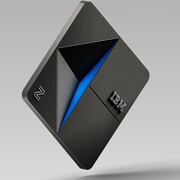IBM Z Review of Actual Experiences by Destiny Corporation
Overall Satisfaction with IBM Z
IBM Z is used across many functions of the organizations we support. It handles transactional processes such as billing, CRM, claims, and other types of data entry functions. In addition, it is used for advanced analytics when the data is stored in databases and data warehouses that support this style of processing. It is also an extremely secure platform as both Z and Z Linux are not standard targets for hackers. Even their design offers no single admin user ID. As Donna Dillenberger of IBM Research said in a recent presentation 'We know better'.
Pros
- Transactional processing, including data entry across multiple departments
- Reporting on massive amounts of data, due to its scale and size of processing capabilities
- Analytics on data as there are various accelerators for both IBM's databases and others such as Oracle
- Security is another major benefit to this platform as it contains a non-open systems design
Cons
- It would be good if IBM could demonstrate more use cases for Z to potential clients
- A migration strategy from Open Systems to Z would be helpful
- Any additional marketing to could explain the benefits of Z/Linux, especially now that RedHat is in the mix.
- IBM Z has had a positive effect on ROI. It allows for consolidation of processes in a larger environment, providing cost savings by removing unnecessary servers.
- IBM Z also has the largest computing capacity for large scale work, which speeds up processes and optimizes job streams.
- IBM does release new versions every few years, so support must be considered, along with new acquisition costs.
- Systems do not start with a large pricetag, which is beneficial for IT as they start using this platform at a low cost entry point.
- IBM POWER9 Servers, Red Hat Enterprise Linux (RHEL) and Windows Server
When it comes to deploying enterprise applications requiring serious resources that cannot be constrained, IBM Z and IBM Power 9 do a great job. However, they are in different classes of service. For high powered applications, we rarely utilize Intel architectures because the scale out concept comes with a bunch of challenges and costs that many people do not always consider until it is too late. Commodity hardware is not meant for heavy workloads.



Comments
Please log in to join the conversation